SUMMARY
This is AI generated summarization, which may have errors. For context, always refer to the full article.
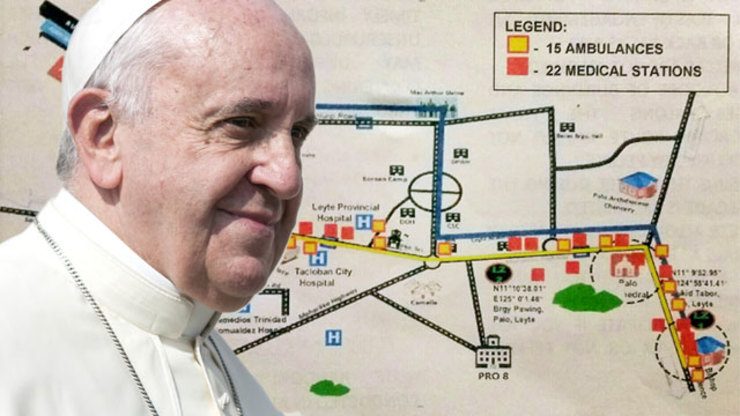
TACLOBAN CITY, Philippines — Although the national government is making similar preparations in both Manila and Leyte for the first apostolic visit of Pope Francis to the Philippines, the logistical setup on the ground makes the Pope more accessible to pilgrims in Leyte than those in Manila.
Pope Francis is scheduled to arrive at the Daniel Z. Romualdez Airport in Tacloban City at around 9:30 am on Saturday, January 17. His official activities include a concelebrated mass, cavalcade from Tacloban City to the town of Palo, lunch with selected Yolanda survivors, blessing of the Pope Francis Center for the Poor, and a meeting with church leaders and some families of Yolanda survivors at the Palo Catheral.
He is expected to depart from Tacloban Airport at around 5 pm.
Although his stay in Leyte is shorter compared to Manila, here are some differences you should know that may allow Leyte pilgrims to have a better glimpse of the Pope:
Leyte is the Pope’s priority
Lingayen-Dagupan Archbishop Socrates Villegas said that Tacloban and Palo trip are the priority of Francis; the Manila and UST activities are just add-ons.
The Pope even requested to spend much of his time with the victims of Super Typhoon Yolanda.
While his schedule in Leyte is short, we must remember though that Francis is fond of surprising everyone, including possibly defying certain protocols that may affect his travel itinerary in Leyte.
Leyte has a smaller population than Manila
The National Statistical Coordination Board (NCSB) estimates the population of Leyte to be around 2 million. It will double to 4.4 million if you include the entire Eastern Visayas. The combined population of Tacloban City and Palo is around 300,000.
Compare this to 11 million people in Metro Manila. The number of people will surely swell up since Manila is the central transportation hub, plus the population of neighboring provinces in the Calabarzon area.
Tacloban City Vice Mayor Jerry Yaokasin projects the Tacloban City population to soar to half a million during the papal visit in Leyte. This number is still very low compared to the estimated millions who will flock to Manila just to see the Holy Father.
Access highways to and from Tacloban are destroyed by Seniang
Those who will travel to Tacloban City from Leyte and Samar may endure longer travel time as several highways are temporarily blocked and rerouted.
On December 29, Tropical Storm Seniang destroyed some roads and bridges that directly connect to Tacloban City.
This is a significant factor that may limit movement of people to and from Tacloban City before, during, and after the papal visit. This may even discourage some local pilgrims in nearby provinces from attending the event.
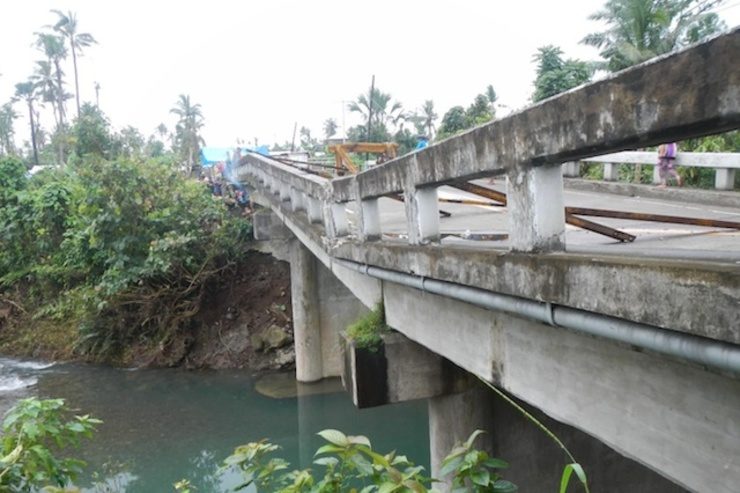
The Leyte papal Mass is expected to gather 160,000 pilgrims
While the Luneta event is projecting to draw as many as 10 million attendees, the mass in Tacloban City is estimated bring only 160,000 pilgrims.
In fact, the accommodation committee only prepared 48 schools and 17 parishes as overnight accommodation areas that can hold as much as 120,000 pilgrims.
In the site map shared to Rappler by the volunteer management communications committee, crowd estimates are only pegged at 107,974 – 2600 seated and 104,374 standing.
Also, the size of the papal mass in Leyte is smaller compared to the Manila site – 10 hectares versus 58 hectares.
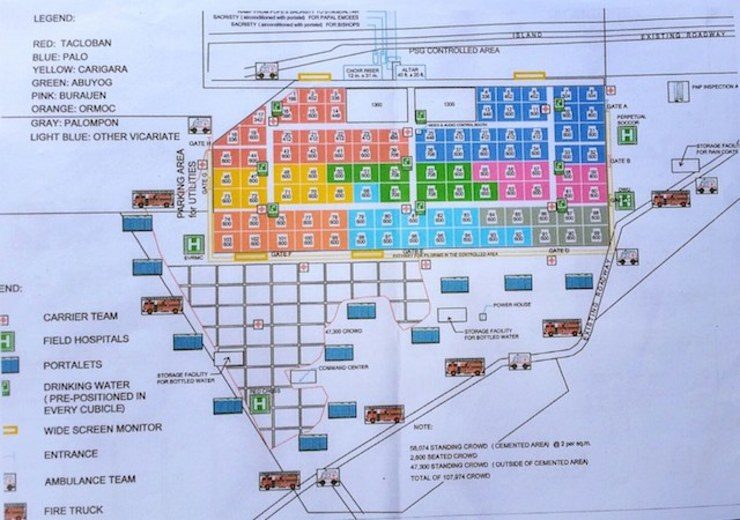
The cavalcade route is long, on narrow roads
The cavalcade route from the Tacloban Airport to the Archbishop’s Palace in the town of Palo is an 11.5-kilometer stretch.
Simulation conducted by the Department of Public Works and Highways (DPWH) regional office estimates travel time to be completed in 42 minutes at a speed of 20 kilometers per hour. This is granting that the Pope will not alight the popemobile and will not be interrupted along the way.
But as everyone knows, this is a Pope who wants to be with his flock and no one can stop him if he decides to do so.
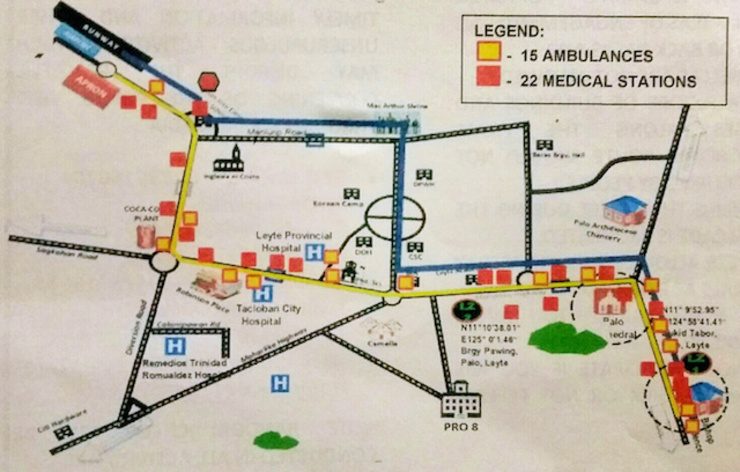
Roads are also narrower in Leyte which can only accommodate two lanes.
DPWH Director Rolando M. Asis revealed that the DPWH plans to use the right lane going to Palo for the cavalcade while the left lane will be allotted for spectators. With this, people will really get the chance to be closer to the Pope considering the size of highways in Leyte.
Houses built along the sides of the national roads raise a lot of security concerns.
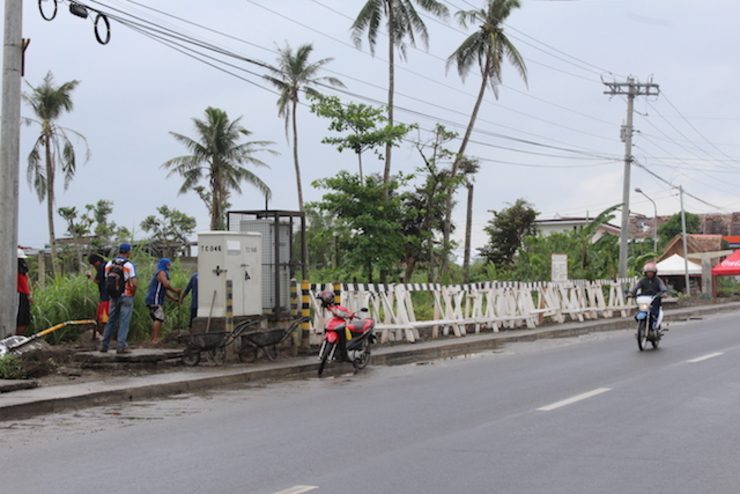
With this, 15,000 wooden barricades and steel bollards connected by ropes will be stationed along the cavalcade route. Human barricades will also be deployed as reinforcement to secure the Holy Father.
As an additional security measure, upper floors of buildings and houses along the papal motorcade route are not allowed to be occupied during the motorcade.
Despite all these challenges, let us all hope for a successful and blissful event as we welcome Pope Francis in the Philippines. – Rappler.com
Add a comment
How does this make you feel?





There are no comments yet. Add your comment to start the conversation.